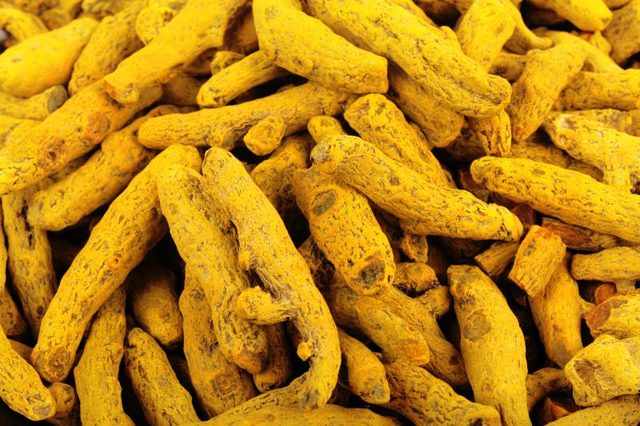
Turmeric is a member of the Curcuma botanical group, which is part of the ginger family of herbs, the Zingiberaceae. Its botanical name is Curcuma longa. Turmeric is widely grown both as a kitchen spice and for its medicinal uses. Two closely related plants, Curcuma petolata and Curcuma roscoeana, are natives of Cambodia and are grown for their decorative foliage and blossoms. All curcumas are perennial plants native to southern Asia. They grow in warm, humid climates and thrive only in temperatures above 60°F (29.8°C). India,Srilanka the East Indies, fiji, and Queensland (Australia) all have climates that are conducive to growing turmeric.
The turmeric plant is identifiable by both its characteristic tuberous root and the leaves that extend upward from erect, thick stems arising from the root. Turmeric root is actually a fleshy oblong tuber 2–3 in (5–10 cm) in length, and close to 1 in (2.54 cm) wide. It is tapered at each end, and its exterior can be yellow, tan, or olive-green in color. The interior of the root is hard, firm, and either orange-brown or deeply rust-colored, with transverse resinous parallel rings. M. Grieve, in A Modern Herbal, states that the root is dense and breaks into a powder that is lemon yellow in color. Turmeric root has a fragrant aroma and a somewhat bitter, peppery, biting taste reminiscent of ginger. When eaten, it colors the saliva yellow and leaves a warm sensation in the mouth.
Rs:200/-